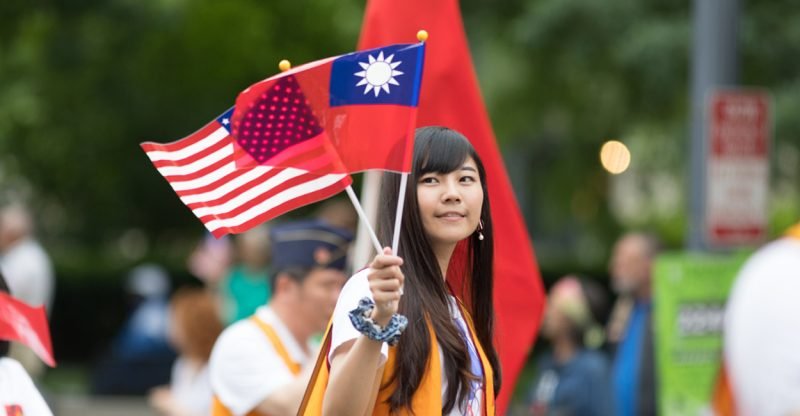The United States and Taiwan: Redrawing the Diplomatic Triangle with China

The history of US-China relations and growing tensions has much in history than in present times. Both countries are “resolved” to protect their interests and are capable of doing so. A number of contentions reemerged in recent times- Tibet, Indian borders, Hong Kong, and Taiwan. All of them could be viewed both in historical and recent political contexts. The theory of Taiwan and the undue interests of China could be viewed in the former context, which is almost a necessity to get a glimpse of the latter dilemma.
US-China-Taiwan and History
The United States and the People’s Republic of China had established diplomatic relations almost three decades after the latter came into existence.
In the 1970s there were dozens of disagreements and at the top of them was- Taiwan. Both China and Taiwan claimed to have legitimate governments (however Taiwan admitted itself to be a “part” of PRC) but China didn’t want the US to have diplomatic relations with both of them which would invariably endorse the “two Chinas theory”. China requested the US to withdraw the troops stranded in Taiwan and didn’t agree to US demand of an agreement vowing for non-military interference for the unification of Taiwan with China.

The US, more or less, agreed to the terms and signed the “Shanghai Communique” in 1972 thereby admitting the notion of “One China”. When China replaced Taiwan officially in the United Nations, despite the opposition from the US, the USA was certain to cut off its relations with Taiwan. But, soon after the US Congress passed the Taiwan Relations Act which pronounced the US deployment of troops and weapons as well as the sale of weapons in Taiwan due to China’s negation of non-violent interference in Taiwan. The US called this its “moral obligation” and asserted that the weapons are only for “self-defense”. The raged PRC twisted the arm of the US and a joint communique was signed where the US nullified any claims of dividing China. The sale of weapons was however continued.
In the 80s and 90s, when Taiwan started inclining towards democracy, the US-Taiwan relations started a new chapter of diplomacy. After military threats from China to Taiwan, the US deployed two aircraft carrier battle groups in the region to prevent any use of undue force over Taiwan.
The standing relations: How the U.S views Taiwan at present?
Taiwan is the United States’ ninth-largest trading partner and the US is Taiwan’s second-largest trading partner. Both counties have around 150 sister cities thereby strengthening the cultural ties between the two. A huge amount of Taiwanese students studying in the US and American Institute in Taiwan (AIT), while working informally, performs all the consular and citizen services for Taiwanese citizens.

The reelection of Taiwan’s President Tsai Ing-wen is received by the global community as a reflection of the democratic process in Taiwan. Under her potential leadership, the US-Taiwan relations could reach new heights. It is for the first time, that not just long term but also the short term goals of the United States against China are manifested in international corridors. Taiwan recently sympathized with Hong Kong in the democracy movement and sided with the US in condemnation of ” One country, two systems”.
President Trump has impliedly adopted the position of indifference to the One China policy and doesn’t want America to be bound by it. Taiwan’s splendid response to the Covid-19 and considerable economic development during the pandemic has gained it the global spotlight, which China always prevented Taiwan from getting.
The reason behind China’s fear of the US’s ascendancy is that, according to a survey study, by nearly two to one margin, people in Taiwan rate the U.S. more favorably than China. Increased support for politico-economic ties with Washington and increasing enthusiasm for a sovereign entity, is creating a new battleground for all the three countries. This view is promoted by the Chinese Democratic Party which proclaims a separate Taiwan identity and is currently ruling Taiwan. The youth in Taiwan is specifically tendentious towards the United States.
Last month, the US Secretary of Health and Human Services paid a visit to Taiwan to discuss health issues. This was the first visit to Taiwan after the revocation of relations in 1979. With this visit, a new chapter is opened in US-Taiwan diplomacy. This is very clear that the new president, after the elections, would have to decide a new strategy towards Taiwan; whether open confrontation with China or appeasing to secure economic independence. The US shall not repeat the mistakes it committed with an ambiguous response to Hong Kong’s political status. Would China invade Taiwan, and repeat what it did to Tibet seven decades back? What would the US do to maintain the status quo with Taiwan? Do both Trump and Biden follow the consistent stand on Taiwan while pursuing their different policies on China?
Each of these questions needs special attention and would only be answered in January when the White House would look to reestablish its foreign policy in a post-pandemic world. The hardening diplomacy towards China is what the US’s ambience urges for and both the nominees are aware of this fact and promise to “categorically” adopt a position when elected. After “Chinese flu” and Hong Kong, the next Twitter trend could be pertaining to Taiwan. Wait and watch, as the fight for Taiwan is never gonna be manageable.



















